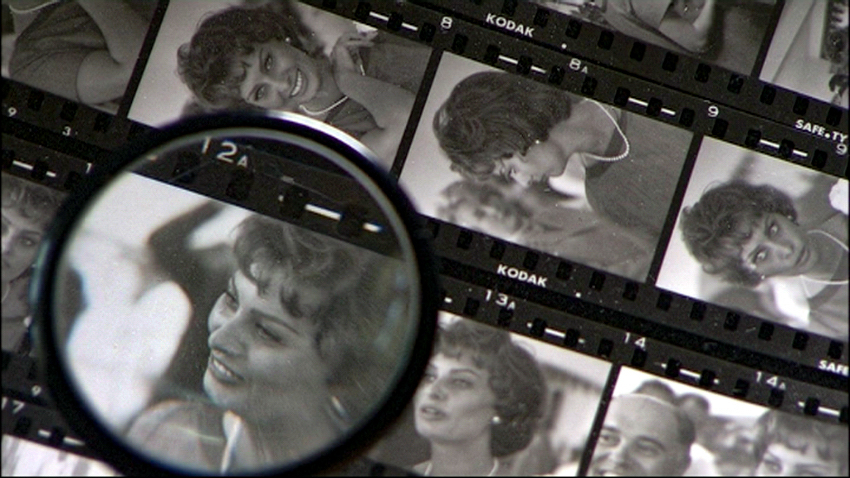Contact Prints

Original vintage contacts are available for exhibitions. Some are glued on a sheet of paper with annotations by Edward Quinn. Sale on request.
A contact print is a photographic image produced 1:1 from the film negatives. In the darkroom the developed negative strips are placed in contact with a piece of photographic paper, light is briefly shone through the negative, and then the paper is developed to reveal the final print.
The contact prints show how the photographer worked, which picture he selected at the time, and how he decided to crop the image. Contacts are a valuable historical document, not only because they are usually truly “vintage”, but also because they show all the images on a roll of film and the order in which they were taken. In this way, they also demonstrate how the technology of the era led to a different way of working as a photographer, in comparison to today.
Until the 1950s, for example, very few cameras were equipped with a motor drive to facilitate continuous shooting. The distinctive, rapid-fire “click-clack” sound associated with professional photographers starting in the 1970s was still unknown in the 1950s and ’60s. The invention of motor drives made it possible to take quick sequences of numerous pictures, from which the photographer would later choose the best one. A whole roll of film would often be “used up” for a single picture situation. By contrast, classic contact prints of images captured without a motor drive show that the choice of the “right” image was made much earlier – or had to be made – when the picture was taken. Each individual picture had worth.
Once digital cameras arrived on the scene, the staccato click-clack sound faded away and images could now be checked immediately after taking them, thereby elimininating the costs for film and laboratory processing.
Today it is hard to imagine that photographers like Quinn had to wait until after the film had been developed to determine whether the focus and exposure were correct and whether there was even anything on the film at all.
Perhaps one could make the claim that the technical development from classical to digital photography led to the gradual disappearance of Cartier-Bresson’s famous “decisive moment”: the precisely timed, unrepeatable, one-chance shot.
